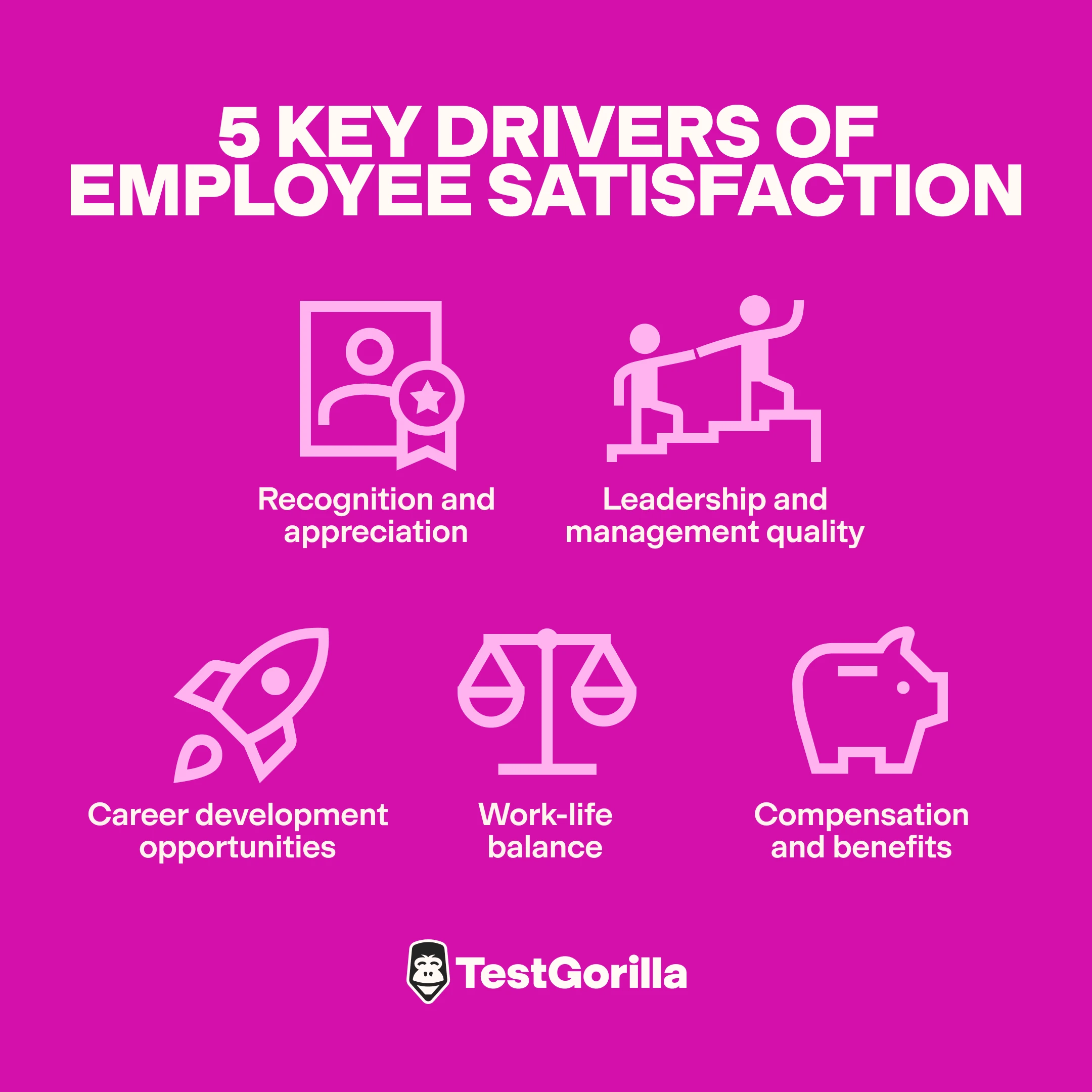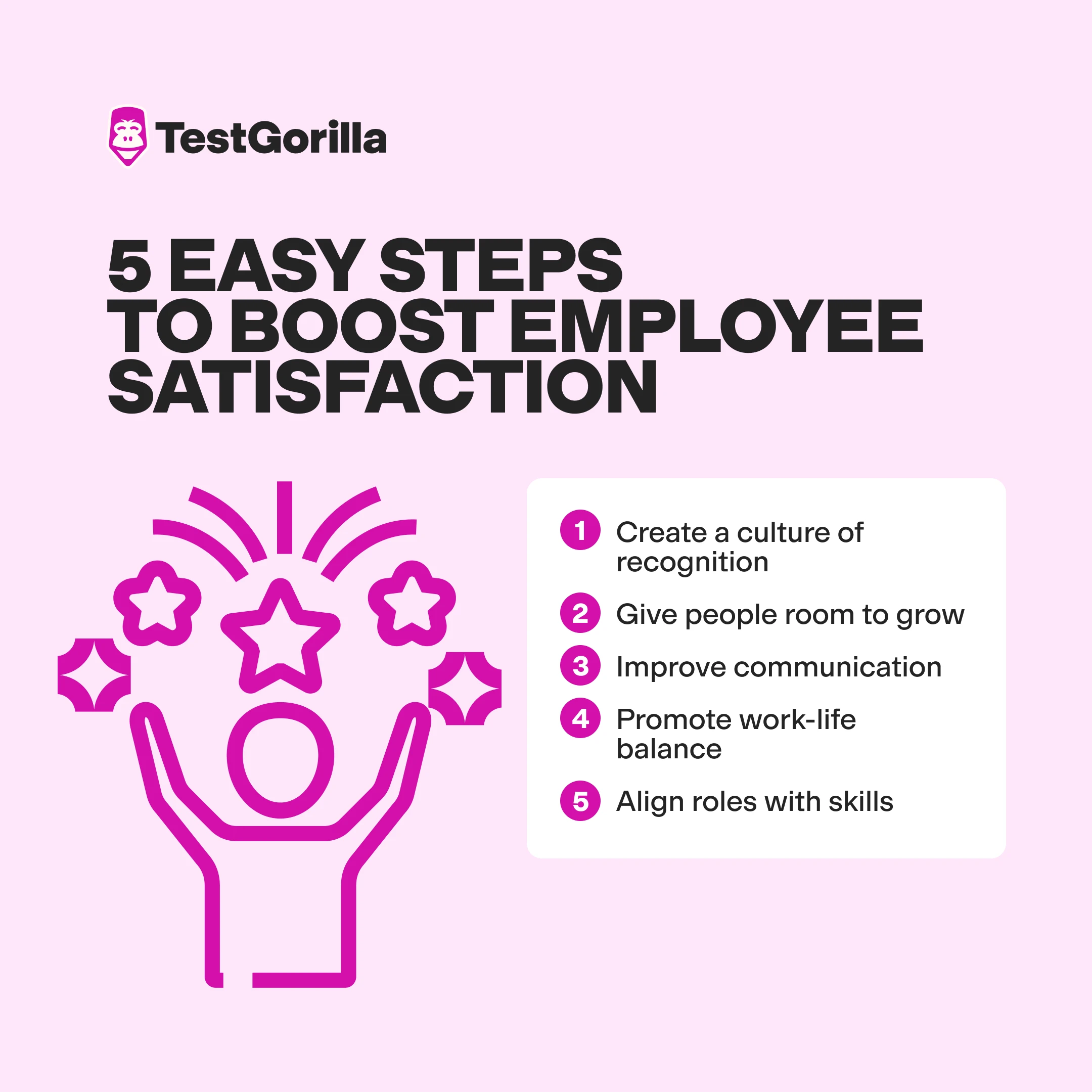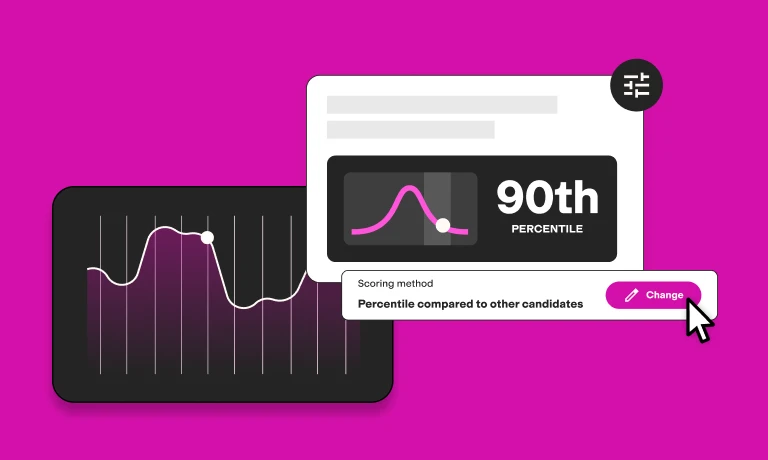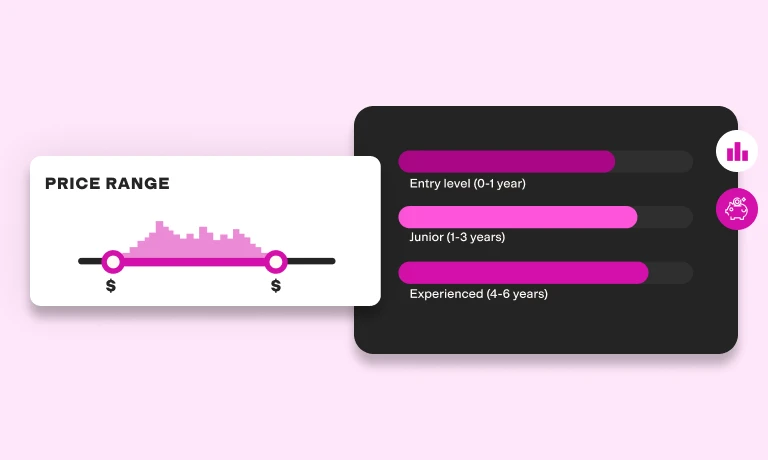Employee satisfaction: The key to beating the competition
Are your employees satisfied? The answer could be the difference between your business succeeding and failing. High employee satisfaction means engaged, productive, and loyal teams, while low satisfaction causes high turnover, decreased morale, and increased costs.
HR professionals, managers, and business leaders want to understand the impact of employee satisfaction and how to improve it. We’ve put together this guide to explore the concrete benefits of satisfied employees, examine the key factors influencing satisfaction, and provide actionable ways for you to boost your teams' morale and retain your workers.
Read on to learn how to create happier, more productive employees that’ll make your business stand out from the competition.
Table of contents
- Key takeaways
- What is employee satisfaction?
- Why employee satisfaction matters
- The risks of employee dissatisfaction and how to avoid it
- 5 key drivers of employee satisfaction
- 3 tried-and-true ways to measure employee satisfaction
- 5 easy steps to supercharge employee satisfaction
- Level up employee satisfaction with TestGorilla
- FAQs
Key takeaways
Employee satisfaction significantly influences retention, productivity, and workplace morale, with tangible benefits for businesses that leverage it skilfully.
Factors like recognition, leadership quality, career development opportunities, and work-life balance play a major role in how satisfied employees are.
Effective surveys, feedback mechanisms, and targeted initiatives can be used to measure and improve employee satisfaction.
Prioritize employee satisfaction to outperform competitors, reduce turnover, and increase engagement.
What is employee satisfaction?
Employee satisfaction is, quite simply, how happy people are to work in a particular place. Are they content and fulfilled in their roles and work environment? Employee satisfaction encompasses job satisfaction, organizational support, and work-life balance.
Satisfied employees are not only more likely to stay with a company but also perform better than unsatisfied ones, boosting business productivity and success.
Employee satisfaction is related to but different from job satisfaction and employee engagement. Job satisfaction focuses on how employees feel about their roles, while employee engagement measures how emotionally committed they are to what the business is aiming to do.
Meanwhile, employee satisfaction is more all-encompassing and can include both concepts in addition to other metrics, which we’ll explore in more detail below.
The best insights on HR and recruitment, delivered to your inbox.
Biweekly updates. No spam. Unsubscribe any time.
Why employee satisfaction matters
Keeping employees happy matters for employee satisfaction, but that’s not the only motivator for businesses: Employee satisfaction directly impacts the bottom line. Research consistently shows that satisfied employees:
Are more engaged in their roles, with an 81% difference in absenteeism
Stay longer with the company, reducing costly turnover by up to 18%
Are more profitable by up to 23% for high-functioning business units
Are more productive by around 13%
Employee satisfaction shouldn’t be seen as an expense. Instead, view it as a strategic move that gives you real ROI in terms of employee performance and retention, as well as company reputation.
The risks of employee dissatisfaction and how to avoid it
Think about the hidden costs of employee dissatisfaction: Constant turnover means increased recruitment expenses and training time, which can, in turn, lead to lost productivity.
Dissatisfied employees are also at risk of disengaging, creating a ripple effect that impacts morale across even high-functioning teams. Businesses populated with dissatisfied employees are less productive and experience higher absenteeism rates. One study by Harvard Business Review found that disengaged employees cost $450 billion to $550 billion per year in lost productivity – shocking stuff.
When employees are satisfied, they naturally act as brand ambassadors, contributing positively to company culture and unwittingly attracting top talent in the process.
Companies prioritizing employee satisfaction avoid the costs of not focusing on it and gain a competitive edge. Give employee satisfaction its dues, and you’ll witness better collaboration, innovation, and stronger business results.
5 key drivers of employee satisfaction
Understanding what drives employee satisfaction is the first step to improving it.
Understanding what drives employee satisfaction is the first step to improving it.
As a brief snapshot, here are the five main factors to focus on:
Recognition and appreciation: Employees want to feel valued. Regular, genuine recognition for their contributions boosts morale and motivation – as well as employee retention.
Leadership and management quality: Effective leadership improves trust, communication, and business-employee alignment. On the other hand, according to Gallup, poor management is one of the top reasons employees disengage.
Career development opportunities: Employees want to grow. A lack of career advancement opportunities can quickly lead to dissatisfaction. Disengaged employees leave, contributing to turnover – or else stay and cause their companies problems, like higher absenteeism and lower productivity rates.
Work-life balance: Burnout is a real issue. Employees who are too overloaded will naturally be less satisfied at work. Flexible schedules, remote work options, and mental health support contribute to higher employee satisfaction and, in turn, retention.
Compensation and benefits: Fair compensation and comprehensive benefits are foundational to employee satisfaction. However, they’re often seen as a baseline rather than a differentiator. Companies that regularly review and benchmark salaries – including benefits meeting the needs of diverse teams – typically increase satisfaction and engagement more than those that fail to update salaries.
View these factors as a primer for improving employee satisfaction, which we look at in more detail below.
3 tried-and-true ways to measure employee satisfaction
If you want to improve employee satisfaction, you must first measure it. After all, if you don’t know what people think about your company, how can you make them feel better? While none of these measurements will increase employee satisfaction on their own, it’s crucial to assess them to boost satisfaction in the long run.
Here’s how to measure it:
1. Employee satisfaction surveys
Surveys are one of the most effective tools for gauging satisfaction. Regular pulse surveys – a short list of quick and easy questions for brief, frequent check-ins – can help you assess people’s feelings minute-to-minute.
Annual satisfaction questionnaires, meanwhile, allow you to collect more detailed feedback on leadership, job roles, and workplace culture.
While there’s no direct statistical evidence that pulse or other kinds of surveys improve employee satisfaction, they are a surefire way to measure it – which is the first step to improving how your workforce feels.
2. One-on-one feedback sessions
Regular check-ins between managers and employees provide an opportunity to discuss concerns, celebrate wins, and resolve challenges early. Managers should schedule monthly or quarterly one-on-one meetings and encourage open, two-way dialogue.
The private nature of the meetings should also help disengaged employees speak more freely in a way that larger team meetings may not. Rather than be an arena for firing out criticism, these feedback sessions can be an effective and controlled way of hearing what people really think about their roles and the company.
3. Track key metrics
While qualitative data is very helpful, companies sometimes need to look at it in tandem with cold, hard quantitative data to get a complete picture of what’s going on. What people say doesn’t always match up to what they do. As such, companies should track the following key metrics to assess employee satisfaction more holistically:
The Employee Net Promoter Score (eNPS) measures employees’ likelihood to recommend your company as a great place to work. Analyze eNPS trends over time and compare them with your own benchmarks to help assess how you can improve employee satisfaction rates.
High turnover rates often signal underlying employee dissatisfaction. They can indicate that you need to urgently focus on improving how your employees feel at work.
Absenteeism in the form of frequent absences from numerous employees can indicate low morale or burnout. If it’s happening a lot, it’s time to take a fresh look at how you can excite people to come to work.
To learn more about how strategic HR data analysis can unlock long-term success, check out our guide here.
5 easy steps to supercharge employee satisfaction
Workplaces that prioritize employee satisfaction create positive environments where individuals feel valued, supported, and aligned with – or adding to – company culture and organizational objectives. This sets the stage for everyone’s long-term growth and success.
Here are proven strategies to build a culture where employees feel valued, supported, and motivated, backed by research and insights from leading authorities:
1. Create a culture of recognition
What to do and why: Publicly celebrate achievements and milestones, no matter how small. Harvard Business Review found that appreciation from managers can boost engagement – a big part of employee satisfaction – by up to 40%.
How to do it: Implement peer-to-peer recognition platforms and give managers tools to offer consistent, meaningful praise. Anything from formal recognition programs like “Employee of the Month” to small but meaningful gestures like shoutouts during team meetings can go a long way to helping people feel valued – increasing their engagement and satisfaction in the long run.
2. Give people room to grow
What to do and why: Offer learning and development programs tailored to employees’ career goals. The Society for Human Resource Management (SHRM) frequently touts the benefits of training for improving employee satisfaction. Career development opportunities can also help drive satisfaction because they enable employees to make more of an impact at work.
How to do it: Introduce upskilling and mentorship programs and allocate budgets for professional training and certifications. Invest in leadership development programs – nurturing talent from within – and encourage open, two-way communication between managers and their teams.
During one-to-ones, give employees a chance to express an interest in moving into different roles within an organization and give them a clear pathway for doing so.
3. Improve communication
What to do and why: Create channels for open feedback and transparent communication. A Gallup study revealed that teams with open communication are 4.5x more likely to retain employees.
How to do it: Schedule regular team meetings to voice collective concerns and focus on issues that affect the whole team. However, you should also provide platforms for anonymous feedback surveys and have one-on-one check-ins with managers to help keep the dialogue open.
Not only will employees stick around, but they’ll also be more satisfied that you’re listening and learning from them and their experiences.
4. Promote work-life balance
What to do and why: Burnout is a real issue. Flexible schedules, remote work options, and mental health support all contribute to higher satisfaction rates. Gallup notes that 76% of full-time hybrid workers cite improved work-life balance as a top advantage of hybrid work – even higher for remote workers (85%).
How to do it: Offer options such as remote work, compressed workweeks, and access to wellness programs. Promote work-life balance initiatives, such as flexible hours or additional paid time off. Don’t forget to check out our guide to leveraging flexible working here.
5. Align roles with skills
What to do and why: Ensure employees are in roles that align with their strengths and abilities. Interestingly, research found that objective mismatches between job roles and employee skills don’t actually impact satisfaction. But subjective mismatches – the perception of a mismatch – do. In any case, better alignment is something to strive for.
How to do it: Use TestGorilla’s employee skills assessments to objectively match candidates and employees with roles suited to their strengths, boosting employee satisfaction and productivity.
Avoid simply focusing on candidates’ backgrounds and experience and opt for skills-based hiring instead. That way, you’ll build teams that bring real value and feel like they’re in the right role, making them more likely to stick around.
Level up employee satisfaction with TestGorilla
No longer do you need to struggle with high turnover, low morale, and disengaged teams. Employee satisfaction doesn’t have to be a guessing game. By aligning roles with skills, recognizing employee contributions, and fostering clear communication between managers and employees, you can boost retention, productivity, and morale – all while keeping your business on track.
TestGorilla makes it easy to get there. Our skills-based assessments ensure your employees are in roles where they’ll thrive, helping HR teams, managers, and leaders address challenges head-on while building high-performing, engaged teams.
Ready to take action? Sign up for a free plan, take a product tour, or book a live demo today. Let TestGorilla help your teams grow, engage, and succeed – because when your people thrive, your business does, too.
FAQs
What is the employee satisfaction level?
The Employee Satisfaction Index (ESI) is a metric used to gauge the overall satisfaction level of employees within a company. ESI gives you a single, quantifiable score to track how people feel about their roles and the company over time and benchmark against other teams and departments or other companies that are also using ESI.
Why is employee satisfaction important?
More happy employees mean less absenteeism and no workplace deviance. Employees stay with organizations they like working with, reducing turnover. Satisfied employees also lead to stronger professional relationships.
What happens if employee satisfaction isn’t maintained?
Companies must constantly maintain employee satisfaction, not just because of higher turnover rates but also because unsatisfied employees who remain with the company can negatively impact organizational output, productivity, and morale.
You've scrolled this far
Why not try TestGorilla for free, and see what happens when you put skills first.




















